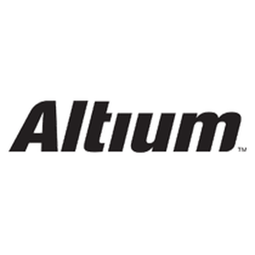Technology Category
- Analytics & Modeling - Digital Twin / Simulation
- Processors & Edge Intelligence - Microcontrollers & Printed Circuit Boards
Applicable Industries
- Electronics
- National Security & Defense
Applicable Functions
- Product Research & Development
- Quality Assurance
Use Cases
- Virtual Reality
- Virtual Training
Services
- Hardware Design & Engineering Services
- Training
About The Customer
Simulation Technologies, Inc. (SimTech) has been a key player in the development and manufacturing of radar scene generation, infrared modeling, hardware-in-the-loop (HWIL) and real-time digital simulations for use in US military programs since 1983. SimTech’s technology includes polarization and aspect-dependent models used in military aircraft, missile and ground vehicle simulations. The company has been supporting military programs such as Joint Common Missile, Longbow, THAAD, PAC-3, iPAM, GMD, NLOS-LS, JAGM, and MRM. SimTech is known for its flexibility and technical expertise in the area of advanced simulation, threat signature analysis and target model validation.
The Challenge
Simulation Technologies, Inc. (SimTech), a developer and manufacturer of advanced simulations for US military programs, was facing a significant challenge with its existing Electronic Design Automation (EDA) tool. The tool, which had been in use for approximately twenty years, was no longer capable of meeting SimTech’s Printed Circuit Board (PCB) needs due to declining product support and infrequent, insignificant upgrades. The company was under increasing market pressure to deliver smaller, more powerful technologies faster. SimTech needed a more sophisticated toolset that could deliver quick turnaround, comprehensive documentation, and parts management. However, as a supplier of military equipment, SimTech could not afford extensive downtime associated with toolset change. The new system had to be learned quickly, competently, and without error to maintain product integrity.
The Solution
After careful consideration, SimTech chose Altium Designer as its new electronics design solution. Altium Designer offered three license levels (Foundation, Board, Unified), allowing SimTech to tailor the toolset to its development needs without paying for unnecessary extras. Altium does not limit its features or offer any entry-level products, providing engineers with an all-inclusive system for a much lower Total Cost of Ownership (TCO). The transition to Altium Designer was smooth, thanks to its import and export functions and wizards. SimTech could easily transfer its previous designs and engineers could continue designs immediately with help from comprehensive online training and Altium support staff. Altium support staff involved themselves in the design process, using WebEx conference tools to determine where errors were and the reason for them, making it easier for the SimTech engineer to troubleshoot.
Operational Impact
Quantitative Benefit

Case Study missing?
Start adding your own!
Register with your work email and create a new case study profile for your business.
Related Case Studies.

Case Study
Remote Temperature Monitoring of Perishable Goods Saves Money
RMONI was facing temperature monitoring challenges in a cold chain business. A cold chain must be established and maintained to ensure goods have been properly refrigerated during every step of the process, making temperature monitoring a critical business function. Manual registration practice can be very costly, labor intensive and prone to mistakes.

Case Study
Predictive maintenance in Schneider Electric
Schneider Electric Le Vaudreuil factory in France is recognized by the World Economic Forum as one of the world’s top nine most advanced “lighthouse” sites, applying Fourth Industrial Revolution technologies at large scale. It was experiencing machine-health and unplanned downtime issues on a critical machine within their manufacturing process. They were looking for a solution that could easily leverage existing machine data feeds, be used by machine operators without requiring complex setup or extensive training, and with a fast return on investment.

Case Study
Cloud Solution for Energy Management Platform-Schneider Electric
Schneider Electric required a cloud solution for its energy management platform to manage high computational operations, which were essential for catering to client requirements. As the business involves storage and analysis of huge amounts of data, the company also needed a convenient and scalable storage solution to facilitate operations efficiently.

Case Study
Leveraging the IoT to Gain a Competitive Edge in International Competition
Many large manufacturers in and outside Japan are competing for larger market share in the same space, expecting a growing demand for projectors in the areas of entertainment, which requires glamor and strong visual performance as well as digital signage that can attract people’s attention. “It is becoming more and more difficult to differentiate ourselves with stand-alone hardware products,” says Kazuyuki Kitagawa, Director of Service & Support at Panasonic AVC Networks. “In order for Panasonic to grow market share and overall business, it is essential for us to develop solutions that deliver significant added value.” Panasonic believes projection failure and quality deterioration should never happen. This is what and has driven them to make their projectors IoT-enabled. More specifically, Panasonic has developed a system that collects data from projectors, visualizes detailed operational statuses, and predicts issues and address them before failure occurs. Their projectors are embedded with a variety of sensors that measure power supply, voltage, video input/ output signals, intake/exhaust air temperatures, cooling fan operations, and light bulb operating time. These sensors have been used to make the projector more intelligent, automatically suspending operation when the temperature rises excessively, and automatically switching light bulbs. Although this was a great first step, Panasonic projectors were still not equipped with any capability to send the data over a network.









